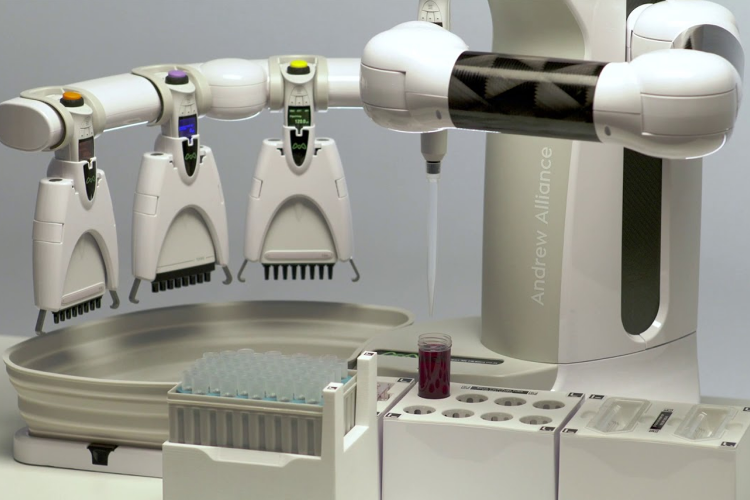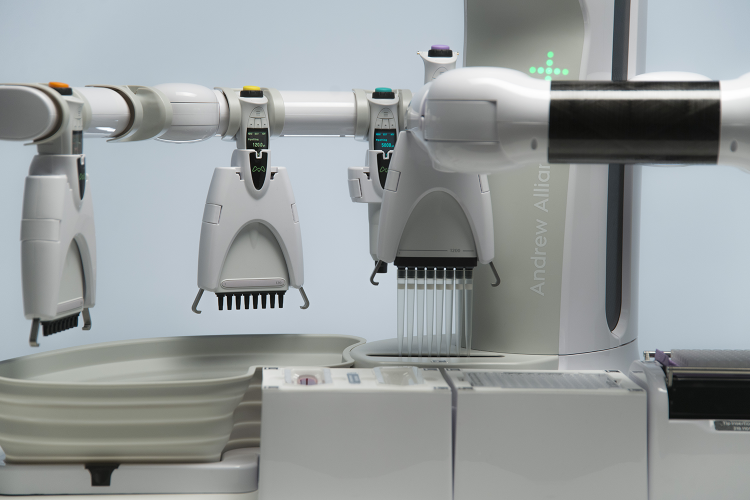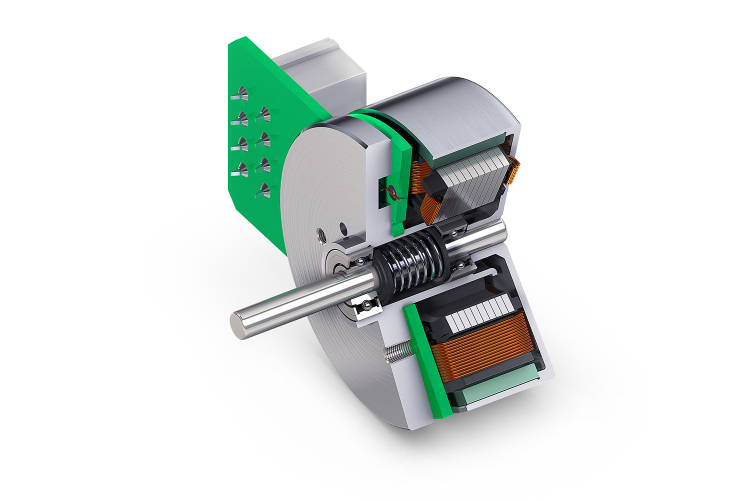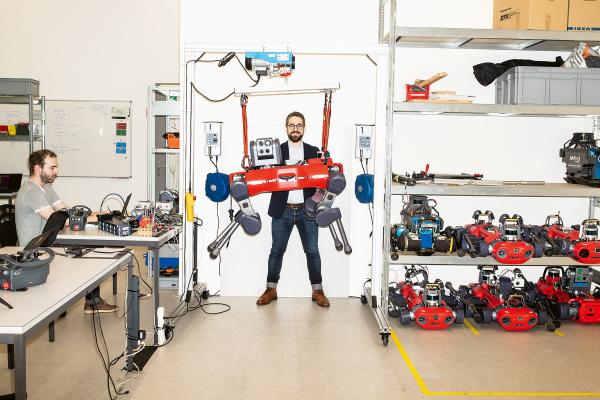The lab automation market continually grows as more tabletop systems become available yet providing features beyond basic pipetting can be a challenge. After years of market feedback, Andrew Alliance took on this challenge, which resulted in their Andrew+ liquid handling robot. Through an expanding range of accessories, the unit has been designed to do more than just automate pipetting like so many competitive systems do (see Figure 1).

Figure 1: The Andrew+ liquid handling robot is designed to accept and work with an expanding range of accessories.
Andrew+ is part of the company’s OneLab, cloud-connected ecosystem that allows users to design and execute laboratory protocols easily and effectively. This flexible architecture enables users to effortlessly transition from laborious manual pipetting procedures to error-free, fully robotized lab workflows. The best part is that users don’t have to be experienced programmers or be experts in laboratory robotics or automation engineering.
This liquid-handling robot’s base unit weighs only 35 pounds for easy benchtop use and can be redeployed to different parts of a laboratory or different departments to be used for a wide variety of tasks. The robot works from an integrated tool wrack. The robot grabs and secures the proper tool for the operation and then performs the allotted function.
Andrew+ is a modular system that can be adapted to many tasks and applications, including sample prep for QC, analytical chemistry, serial delusion, plasma prep, DNA extraction, concentration normalization, and so much more. With single and multichannel electronic pipettes, the system ensures liquid handling performance while delivering maximum flexibility to the user. In addition, the unit can perform a wide range of complex experimental steps, such as column grabbing, depending on the application.
The pipettes offer speed and dynamic range of dispensing volumes from 0.2 µL up to 10 mL (see Figure 2). As the unit has been designed to fit most laboratory benches and biosafety cabinets, flexibility is built-in. The unit can operate with two full rows of Dominos (allowing for 7 microplates or 56 falcon tubes or 168 microtubes and occupies a depth of ~60cm/24-inch—that fits even the smallest hoods. The compact size of the unit allows it to be located in a refrigerator and work at temperatures as low as 4oC.

Three-Joint Robotic Actuation
Andrew Alliance chose three EC45 Flat motors designed and manufactured by maxon for the robot arm actuation—one each for the shoulder, elbow, and wrist. According to Antoine Jordan, Global Operations Director, “The size and footprint were really important to keep the robot both compact and lightweight.”
The company has used maxon products in the past, which allowed the company to have plenty of prior experiences with the motor technology before incorporating them into this new design. Impressed by the motors’ stability and maxon’s broad line of products compatible with a wide number of applications allowed for complete design flexibility for the project. Andrew Alliance also felt like they could trust using a minimally customized version of the motors for their application if necessary.
Once the decision on which motors to use was finalized, the design parameters were tightened so that the end result would allow them to produce a highly accurate, precision system. Because accuracy is so important in an automated lab robot, the design included an integrated absolute encoder used for the system’s closed loop operation. This helped to provide and maintain the precision necessary for the final application. The robot required this extremely accurate operation for both key operations—to make precise movements while picking up the various instruments or tools, as well as performing the operation required once the tool was in the robot’s grip.

Figure 3: Three EC45 Brushless DC Flat motors are used on the Andrew+, one for each of the robot’s joints.
The Right Motors
Deciding to incorporate the EC45 Brushless DC Flat motors was one of the critical decisions made for the application (see Figure 3). Besides the precision necessary for operation, the motors needed to be very quick to respond throughout the entire move sequence. Dependent upon where the robotic arm is located at any one moment, greater torques were required, particularly for cantilevered operations. Sensors integrate with the system controls to make sure that the homing of the arm is performed without touching any other system components.
The motors are 4-pole brushless units that are electronically commutated, thus enabling extremely long motor life and low-noise operation. By incorporating high-energy neodymium magnets, the motors are very responsive while minimizing overall size. Continuous output power is 200 watts, while the maximum speed is 12,000 rpm and maximum continuous torque is up to 265 mNm (37 oz-in) depending on the winding.
The EC45 motors used in the Andrew+ are standard motors with a slight variation. Since maxon has several variations of the motor already available it was easy for the two teams to work together and find a product that had already been used in the past and was easy to reconfigure for this specific application. Once these first motors were selected and designed in, production quantities were available, and the project has run smoothly.
Conclusion
Andrew Alliance found that when working with a trusted supplier, they were able to find and select the right components for their Andrew+ laboratory automation robot. The EC45 motors provided the speeds, torques, and precision needed for a wide variety of operations the robot was designed to perform. Reliability and long life were also critical requirements delivered in the company’s motor selection. When operating in such a critical industry as laboratory automation, both design expertise and the right technology is important.
Video of the Andrew+ in action:




